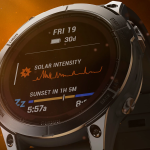
A Sisoft Sandra Listing of Intel’s upcoming 12th generation “Alder Lake” platform has leaked out (via Videocardz). The CPU is a 16 core (technically an 8+8) / 32 thread (technically 16+16) part with 8 big and 8 small cores. Alder Lake is aimed dead center at the mobility market and should offer the best of both worlds: power savings of small cores for standby and mundane tasks and performance of big cores.
Intel Alder Lake S smiles for the camera in Sisoft Sandra benchmark
The platform is slated to arrive sometime in late 2021 (it will come after Rocket Lake) and is expected to feature PCIe 5.0 and DDR5 support. The device detected in the leak has 16 cores, 12.5 MB of L2 cache and 30 MB of L3 cache. The big cores are “Golden Cove” which is the successor of “Willow Cove” while the small cores are called Gracemont.
This particular instance does not mention the exact memory configuration that the device was rocking but did mention DRR4. If that is a typo for DDR4 then it could imply that Intel is planning to keep DDR5 exclusive to desktops for now (which would make sense considering laptops don’t really need all that much bandwidth). The clock rate was shown as 1.38 GHz although this is almost certainly an incorrect reading considering the big and small cores will be clocked differently and Sisoft will need to be updated before it can properly read this.
Intel Alder Lake CPUs will feature 32 EUs likely based on next-gen Xe Graphics
This might be disappointing news for some (I know it is for me) since it means that the GPU will be less powerful than the Tiger Lake iGPU expected to launch next month but there is a silver lining (as always). It actually does make sense from a business perspective because anyone buying a high-end S-class core from Intel will be equipping that with a discrete GPU and a high-end onboard GPU will only increase costs for the customer. To put this in perspective, this is a strategy utilized by AMD processors that don’t ship with an iGPU at all.
Intel Alder Lake Client Platform Alder Lake Client System
(Intel AlderLake-S ADP-S DRR4 CRB)Intel(R) AlderLake-S Mobile Graphics Controller
(256SP 32C 500MHz, 512kB L2, 6.3GB)https://t.co/bNosaT4eNG— APISAK (@TUM_APISAK) July 17, 2020
The iGPU itself is currently clocked at 500 MHz, which is something that I am sure will go up to 800 MHz to 1 GHz at the very least once drivers and revisions are finalized. Depending on the exact clock (800 MHz or 1 GHz), the iGPU will have a performance level of around 0.5 TFLOPs which is meager to say the least (but better than nothing). Considering this means that Intel is focusing on cost [opinion], I would also hazard a guess that the company will be slashing MSRP for its next generations lineup once again as it prepares to face off against AMD’s formidable Zen-based CPUs.
Of course, the most interesting thing about the Alder Lake processors isn’t going to be the iGPU or even the 10nm process – it’s going to be the new big and small architectural design. This design coupled will allow the company to increase power efficiency significantly without trading away raw performance and will be the perfect architecture for mobility.
Tiger Lake’s successor will have at least 128 EUs for some seriously impressive onboard power. The TGL iGPU has already EoL-ed NVIDIA’s MX150 and 250 and trades blows with the 350 and a successor could do the same for the upcoming MX450. Raja Koduri has already stated that the company plans to double performance every generation for the foreseeable future and the TGL successor should have twice the TFLOPs count as a result. Alder Lake’s big and small cores coupled with Tiger Lake’s successor’s iGPU is where the real battle for integrated graphics is going to be fought.
Intel Alder Lake CPU configurations:
The desktop side of Alder Lake, called Alder Lake S will have up to 125W TDP and up to 8 big cores + 8 small cores. Depending on whether or not you can use all cores simultaneously, this is either an 8 core design or a 12-ish core equivalent design in terms of power. The presence of small, highly power-efficient cores will allow the company to reduce standby and idle power consumption as well as menial loads (like light browsing etc).
According to the data posted by the source, Alder Lake series platforms would be:
-
Alder Lake-S
- 8 Big Cores + 8 Small Cores with a GT1 GPU
- 6 Big Cores + 0 Small Cores with a GT1 GPU
-
Alder Lake-P
- 2 Big Cores + 8 Small Cores with a GT2 GPU
- 6 Big Cores + 8 Small Cores with a GT2 GPU
-
Alder Lake-M
- 2 Big Cores + 8 Small Cores with a GT2 GPU
There is also an Alder Lake P which could probably stand for the Atom Server series if older Intel P series SKUs are any indication. Servers that have a highly dynamic workload (think servers that can scale client loads) would also benefit from this technology as it would make scaling between light and heavy workloads more power-efficient.
An Intel Alder Lake M is also in the works which is likely going to be the mobility series. This is the one we are most excited about. The presence of light cores would allow the company to extend the battery lives of laptops significantly as they would no longer have to engage the heavy cores for light tasks.
Intel’s Alder Lake CPUs based on 10++ process will feature 8 big and 8 little cores on the LGA 1700 socket
A very interesting post about Intel’s upcoming 10nm-based Alder Lake processors was posted on Chinese PC shopping forums recently. This post was very surprising because not only is Alder Lake quite far out on the horizon (It will be preceded by Rocket Lake which should succeed Comet Lake), it showcases the introduction of a philosophy that has been wildly successful in smartphones: big.LITTLE.
While this particular leak is dedicated to desktop processors, if this technology is introduced in Alder Lake then you can be sure it will trickle down to the notebook parts as well – and it is there which should be able to add some serious value. The big.LITTLE philosophy (invented by ARM) allows processor manufacturers to selectively choose a high performance or a low energy cluster depending on need and demand. While it won’t make a lot of difference in a desktop environment, it makes a huge impact in mobility applications where TDP envelopes are usually constrained and power quite restricted. Before we go any further, here is a screenshot of the relevant slide:
The three types shown here range from an 8+8+1 configuration (8 big, high powered cores; 8 little, low power cores; and 1 integrated GPU) to a standard 6+1 configuration (only 6 “big” cores with an integrated GPU). The notes also state that Intel is investigating with a 150W design. While it is unclear why Intel is worried about power envelopes in a desktop environment we can expect that the company will allow the big cores to clock fairly high. It will also be interesting to see whether all 16 cores can work in tandem (or only 8 at a time as is usually the case). Judging from the fact that both the 8+8+1 and 6+1 SKUs have the same TDP, however, it likely won’t be possible for all cores to operate in tandem.
The post Intel 12th Generation ‘Alder Lake’ CPU With 8 + 8 Cores Spotted In Sisoft Sandra Benchmark by Usman Pirzada appeared first on Wccftech.
Powered by WPeMatico









